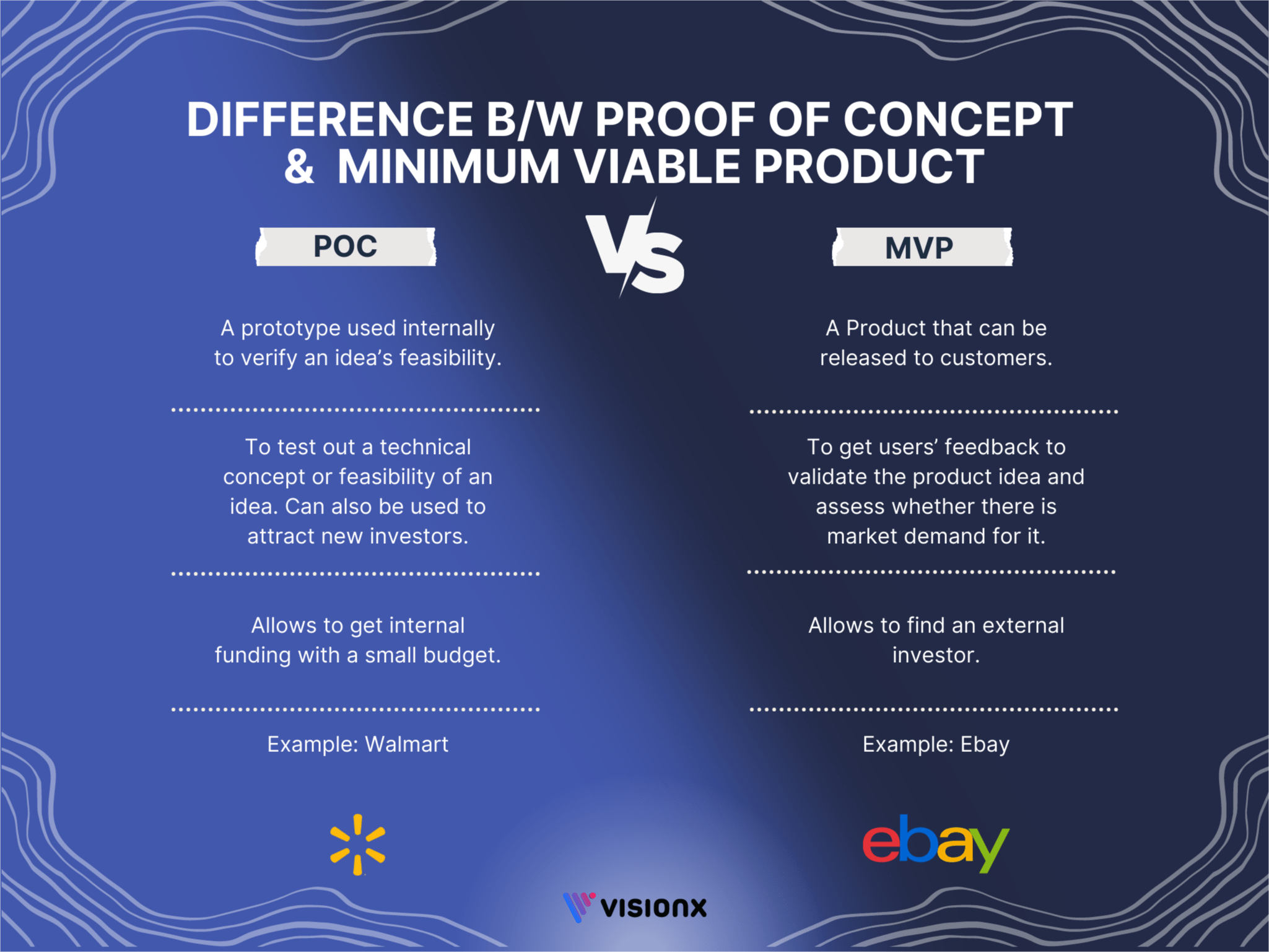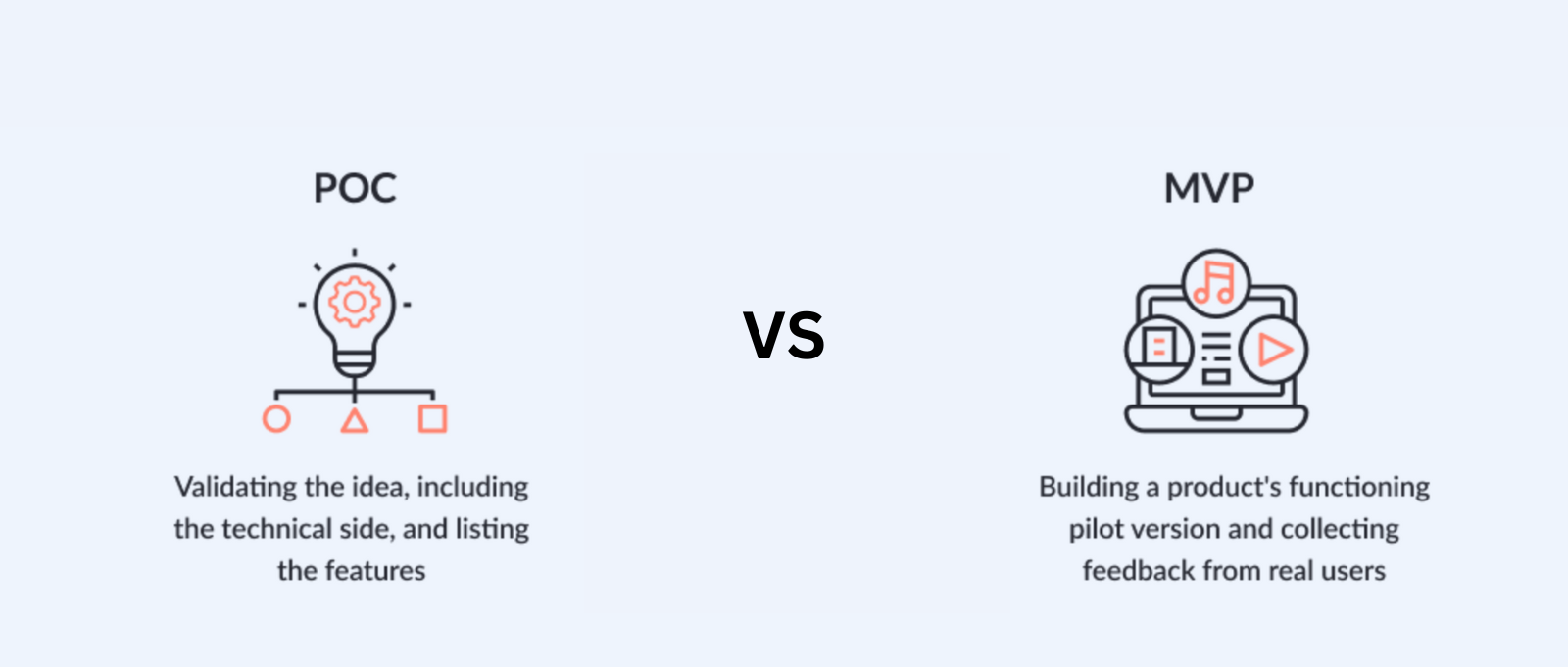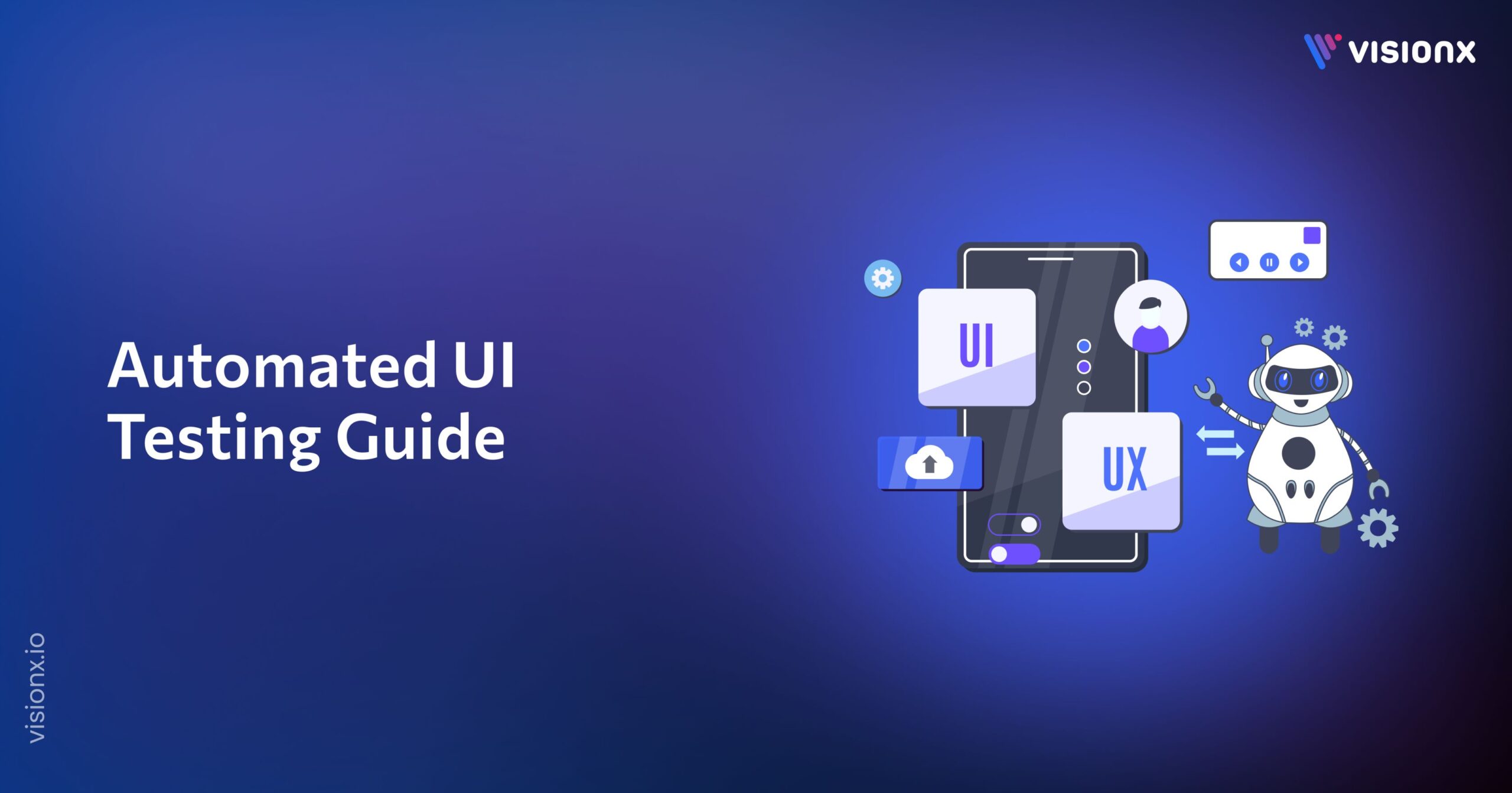The first step in developing a fresh startup idea is determining its viability and attracting investments. Many startups even found it perplexing to decide on a perfect tool to achieve these goals. Two primary means are used to achieve these objectives: minimum viable product (MVP) and proof of concept (POC). So, understanding these two methods can drastically improve the chances of winning investors and reducing project costs.
However, one of the most significant decisions you’ll need to make is whether to opt for a proof of concept (POC) or minimum viable product (MVP) approach. POCs and MVPs are essential tools that allow you to test your ideas before committing to a full-scale launch. But which one should you choose? In this blog post, we will dive into the differences between proof of concept vs. MVP software development and explore how each can help bring your ideas to life.

What is MVP software development and Proof of Concept?
If you’re developing a new software application, you may wonder whether to create a proof of concept (POC) or minimum viable product (MVP). Both are examples of agile development, which favors short development cycles and quick feedback over long, drawn-out processes. Here’s a closer look at each approach and how they differ:
A proof of concept is precisely what it sounds like – a way to test whether an idea is feasible. A POC is typically used to validate that a particular technology or approach will work as intended. It’s usually small-scale and not meant to be deployed or used by customers. It is generally used to answer questions such as the project’s scope, what problem the project solves, the time and budget of the project, and discuss the feedback from stakeholders.
A minimum viable product is also designed to test an idea, but it takes things one step further by putting a working product into customers’ hands. This allows businesses to get feedback early on and make necessary adjustments before investing too much time and resources into the development process. An MVP only has some of the bells and whistles of a final product, but it should have enough functionality to meet the needs of early adopters. MVP can also be released on the market, so it is not a prototype but a model that can be sold to consumers.
So, which one is suitable for your project? It depends on your goals and the stage of development. If you’re unsure whether an idea will work, a proof of concept can help determine if it’s worth pursuing. But if you aim to get customer feedback and are ready to release, an MVP would be a better option.
What is the difference between MVP Software Development and Proof of Concept?
The main difference between a Minimum Viable Product (MVP) and a Proof of Concept (POC) is that an MVP is meant to be a product that can be released to customers. In contrast, a POC is intended to be a prototype or test used internally to verify an idea’s feasibility.
An MVP is typically designed to get users’ feedback as quickly as possible to validate the product idea and assess whether there is market demand for it. A POC, on the other hand, is usually developed to test out a technical concept or feasibility of an idea. It can be used to attract new investors, validate the feasibility of an idea and choose the right technology.
Unlike an MVP, which focuses on delivering the bare minimum functionality users need to provide feedback, a POC is often much more fully featured. This is because the point of a POC is not necessarily to get user feedback but to prove that something can be done.
There are some key considerations that you need to keep in mind when deciding which approach is right for your project:
- How important is it to get feedback from actual users?
- How risky is the technology or concept being tested?
- How much time and money do you have to invest in development?
- What are your overall goals for the project?
If you’re still unsure about which path to take, we recommend talking to a software development expert who can help you assess your needs.
Comparison
When it comes to product development, there are a lot of different acronyms and terms that get thrown around. It can be not easy to keep track of them and even more challenging to understand what they mean. Two standard terms you may have heard are “proof of concept” (POC) and “minimum viable product” (MVP). But what exactly is the difference between these two concepts? Let’s take a closer look. Here is a clear illustration:
| Specification | POC | MVP |
| Answers the Question | Is my idea technically feasible? | Will my product be viable? |
| User Interaction and Target Audience | Is meant to be used internally | to allow users to test the product. A target audience is a pre-selected group of potential customers. |
| Provide a short-form functional version of the product that can be launched on the market. | ||
| Cost-Effectiveness | Allows to get internal funding with a small budget | Needs an estimated budget and allows to find an investor. |
Example
Proof of Concept:
Walmart
The story of Walmart serves as a notable illustration of using a PoC. They faced the problem of disease traceability for their products delivered from different farms. At the outbreak of food-borne disease, identifying its source could take a long time. They required a method that would assist in tracing the origin of products and identify only the diseased farms.
Walmart decided to trace the product’s origins using blockchain technology. Walmart and their business partner IBM undertook two proof-of-concept projects to test their concept. Mango tracking in US retailers was one issue that was resolved. Another approach tried tracking the meat sold in Chinese Walmart stores. Both endeavors were successful.
MVP:
Ebay
A minimum viable product launch demonstrates whether your product meets the demands of specific people. The next step is to choose whether to continue adding features or to refine your product. An example is eBay, which wants to produce amazing things. But they realize that a core feature set must be completed first for their vision to materialize. They created Promoted Listings Lite in this manner.
How to Improve
There are a few key ways to improve your MVP or proof of concept software development process:
- Could you be clear on your objectives from the beginning? What are you trying to achieve with your MVP or proof of concept? What problem are you trying to solve? Once you understand your goals well, planning and executing your project will be easier.
- Create a comprehensive plan. This should include all aspects of the project, from budget and timeline to technical requirements and risks. A well-thought-out plan will help keep the project on track and ensure everything is remembered.
- Stay flexible. An MVP or proof of concept will likely change as it progresses, so your approach must be flexible. Be prepared to change the plans as needed, and be bold and pivot if something isn’t working out as expected.
- Test early and often. Testing is essential at every stage of software development. Still, it’s necessary for an MVP or proof of concept where there is often less time for debugging and fixing errors. Make sure you test regularly.
Conclusion
In conclusion, proof of concept and MVP software development differ in many ways. The main difference is the development scope – Proof of Concept focuses on validating an idea, while Minimum Viable Product focuses on creating a functional product from those ideas. It’s essential to understand both concepts when launching your project to know what stage best suits your needs. We at VisionX can help you transform your business through IT consulting, custom software development, custom programming services, mobile development and consulting. Ultimately, choosing between the two will depend on how much time and resources you have available for development and the type of app or website you’re looking to build.


